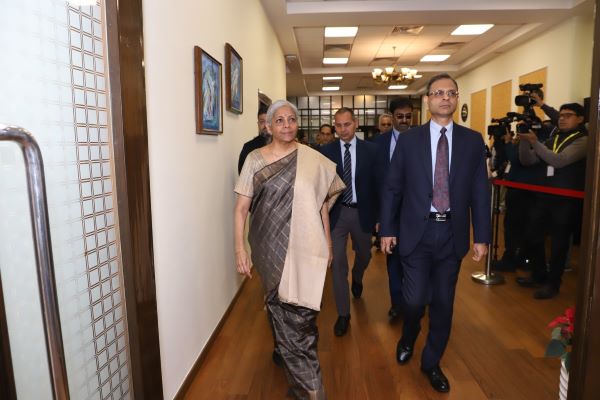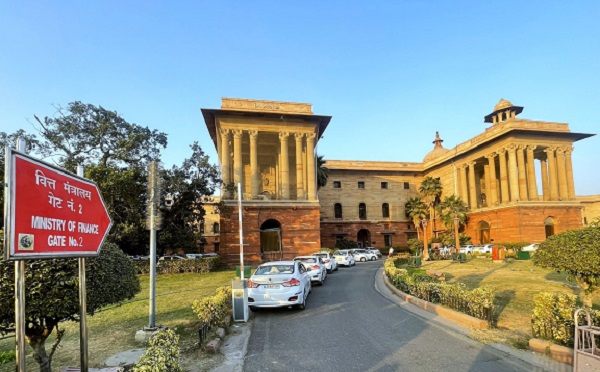.png)
RBI Goes All In On Dovishness, Outdoes Most Dovish Of Pundits
The central bank has done everything the market hoped—and more. What matters now is how far ahead the market decides to run.


Groupthink is the House View of BasisPoint’s in-house columnists.
April 9, 2025 at 5:46 AM IST
The Reserve Bank of India has delivered its most dovish policy in years—and markets are lapping it up. Not only did Governor Sanjay Malhotra lead the Monetary Policy Committee to cut the benchmark repo rate by 25 basis points to 6%, he also trimmed the growth and inflation forecasts and, most significantly, shifted its policy stance to “accommodative.” That move effectively takes rate hikes off the table. The only paths ahead are a cut or a pause.
Bond traders were already entering the policy review with bullish expectations, but the RBI has surpassed even those. By delinking its guidance from the global rate cycle and disregarding the Federal Reserve’s stop-go approach, the central bank has made it clear that domestic conditions will drive its actions. That clarity alone is worth a rally.
This is the first back-to-back rate cut in over five years, underscoring a decisive turn in the RBI’s macroeconomic assessment. Inflation no longer anchors the central bank’s messaging. The RBI sees headline CPI averaging just 4% in 2025–26, with a sharply revised April-June forecast of 3.6%. At the same time, it has trimmed the GDP growth forecast to 6.5%, reflecting a modest downgrade amid global volatility. The RBI’s coordinated downgrade of inflation, growth, and rates signals a sweeping shift—from caution to outright proactivity.
By pivoting hard to growth support, the RBI has effectively opened the floodgates. The guidance is unambiguous: more easing may follow, data permitting. This is not the cautious central bank of the past that held its cards close. If anything, Malhotra has made his intentions plain.
So dramatic is the shift that even some of the most dovish talking heads on financial news channels are sounding a note of caution. Several economists now worry that the central bank may have gone too far in stoking expectations of successive rate cuts. The risk is that the RBI, having led markets to price in a long easing cycle, may be forced to walk it back if inflation flares up later in the year. A reversal, however well argued, would dent the credibility built by today’s clarity.
The moot question now is not whether the central bank will cut again, but where this cycle ends. Is the terminal rate 5.5%? Or could it go even lower? In truth, that number is of little immediate consequence. Markets and banks have already received the signal they were looking for. Whether or not the RBI delivers a cut at every meeting, the expectation of further easing is now baked into the system. Lending and deposit rates will begin to reflect this outlook, loosening monetary conditions even in the absence of actual policy moves.
In effect, the market is now set to run ahead of the central bank. That’s a dynamic with risks as well as rewards. As monetary expectations become entrenched, the RBI may find it harder to calibrate its actions if the global environment turns. Still, for now, the playbook is clear: support growth, keep inflation benign, and stay ahead of sentiment.
What remains to be seen is how external dynamics—especially those linked to the United States—interact with this domestic momentum. If India can parlay its geopolitical goodwill with Washington into tangible trade advantages, particularly in the context of the ongoing US-China standoff, the stage could be set for a medium-term growth uplift. A favourable bilateral deal could insulate India’s external sector from some of the global drag and provide an additional tailwind to the RBI’s strategy.
Ultimately, the RBI under Malhotra has chosen clarity over caution. It has put its weight behind growth, even as it acknowledges that external risks persist. That’s a bold shift—but a coherent one. The stance shift to “accommodative” is not mere semantics. It marks a turning point. And with both inflation and growth forecasts downgraded, the central bank has ample cover for its actions.
India’s monetary policy has now set the tone for the next phase. Whether or not future cuts materialise, the easing bias is locked in. In monetary policy, credibility is currency—and for now, the RBI has bought itself time, space and flexibility. It’s a rare moment when a central bank says exactly what it means. India’s markets should listen—before they run too far ahead.



